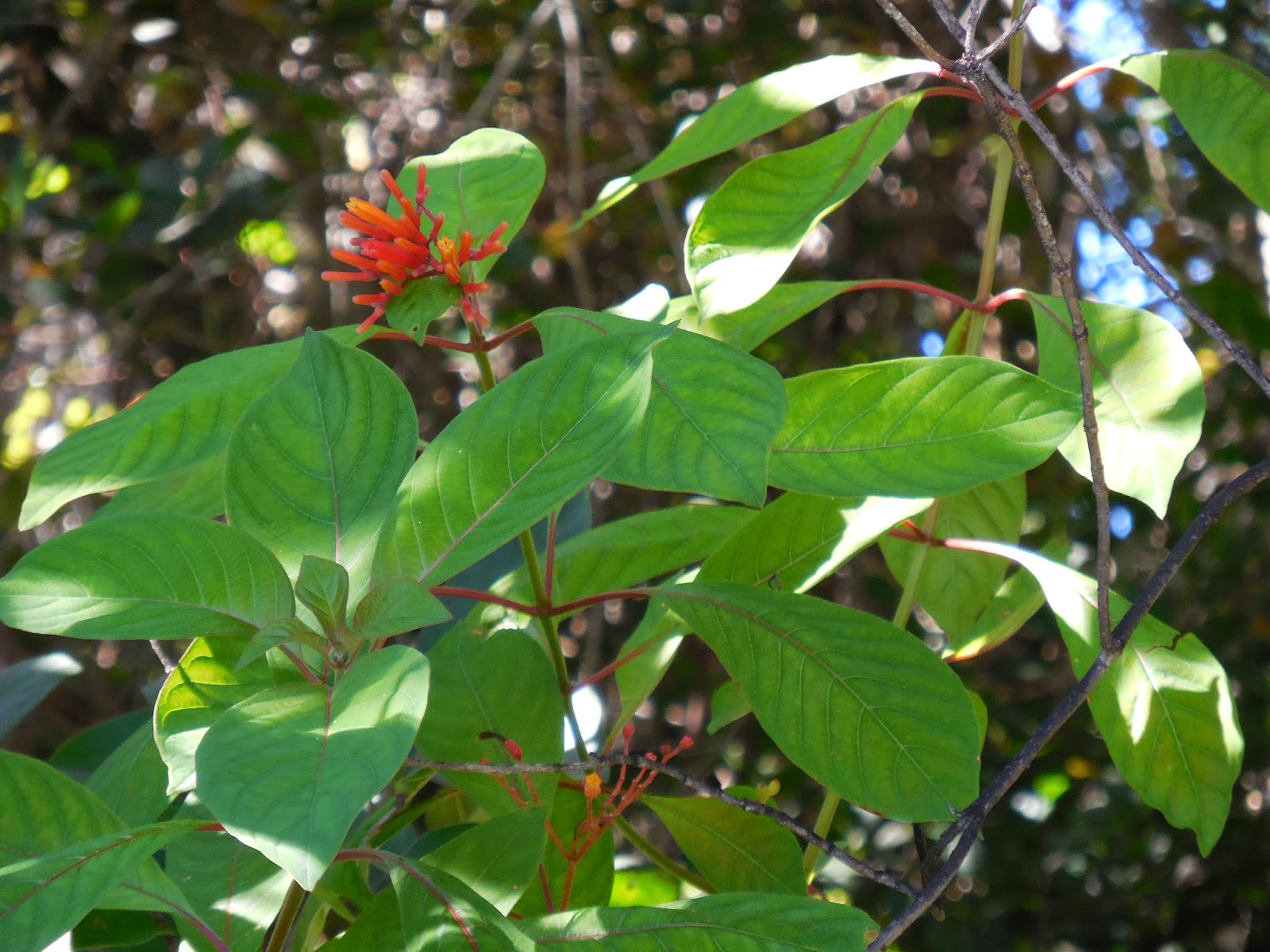Knowing the Natives
October 21, 2014 – My
friend Phyllis conducts tours of the grounds at the Sanibel city hall, where numerous
native plants grow. The tours are not
about city government; they are about what grows well on this fragile barrier island –
plants that do not need fertilizer and that can survive droughts.
The tours are free and
no reservations are needed. For property
owners, it is a bargain and a joy to listen to the information that Phyllis
provides. In her sweet voice, she tells
little stories about each plant. She
needs no notes; she knows it all by heart.
Phyllis is the chair
of the city’s vegetation committee. She
devotes much time to this volunteer job.
The committee's members inspect properties that are being developed; they
help to ensure that native plants are protected and replaced when necessary.
 |
| A firebush bloom. |
That committee also
does much to educate new property owners as well as longtime residents like me,
who have forgotten what they once knew.
When we first owned
our Sanibel home, and the one before it, I did much of the gardening and I
learned about the native plants. Then we
hired Ray to maintain the jungle we have, and I did not need to know about the
plants so much – I simply have relied on Ray for many years.
Now that Tom and I
have purchased Cooley Hammock, 3.6 acres of tropical hardwood hammock on which
we intend to build a house, I feel that I must learn again about the
natives.
When I decide to learn
something, I am serious about it. On the
native plant tour last Saturday, I was the only one taking photographs and
making notes.
I just now finished
renaming all of those photograph files with their actual plant names (from my
notes). There are about 85 photos,
representing about 75 different plants, almost all of which we can grow
someplace on Cooley Hammock.
 |
| Coontie |
For more, I can go to
the city’s web site to use a
document that lists native plants and has links to photographs of those plants.
I’ve assembled quite a
collection of books about Florida plants, too, so all the resources needed for
my education are at hand. When I’m
stumped, I can take a leaf sample to the Native Plant Nursery at the
Sanibel-Captiva Conservation Foundation and there Jenny Evans can identify it
for me.
Plans for building our
house on Cooley Hammock are moving ahead ever so slowly. So much work remains to be done on the
architectural plans! And right now, we’re
waiting for soil testing to be done.
This entails drilling and taking cores as samples, and that means the
engineers must first get a drilling permit from the county. When this testing is done, we will know for
certain what kind of foundation we can have.
We want concrete.
On Sunday, another
house – far away – captured our imaginations for a few hours, thanks to
Zillow.com. That house was built in
1792, in Pacolet, South Carolina, by a man whose grandfather was my husband Tom’s
great-great-great-great grandfather.
It is a big old square
plantation home, to which an addition was tastefully added in the 1990s to
provide a modern kitchen, bathrooms and closets. The couple who owned it in recent years also
restored the old home in the 1990s. That was a major
project.
Once part of an
800-acre farm, the home is now being sold on just 3 acres, including an old
smokehouse and barn-like garage.
But we want our big
square house on 3 acres to be on Sanibel, so we put aside the thoughts about
the South Carolina place (near Tom’s hometown of Gaffney, SC) after reviewing
Tom’s genealogy and thinking about how nice it would have been to own that
stately home when we were younger.
Now, however, we are
Sanibelians, through and through.


Comments
Post a Comment